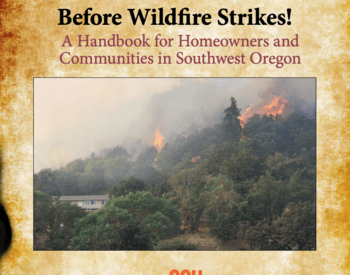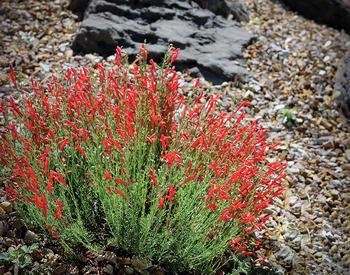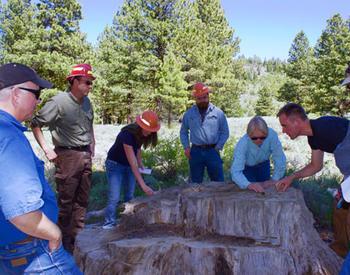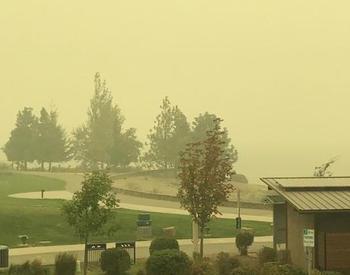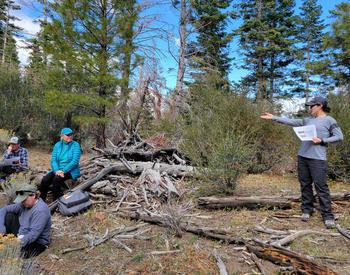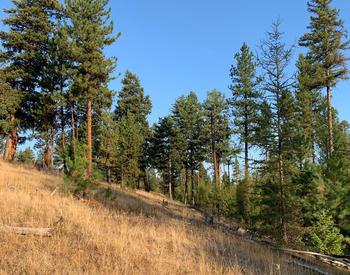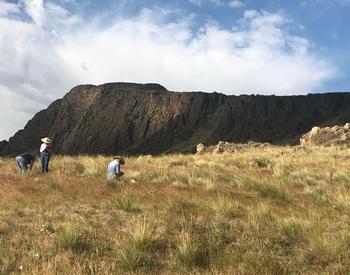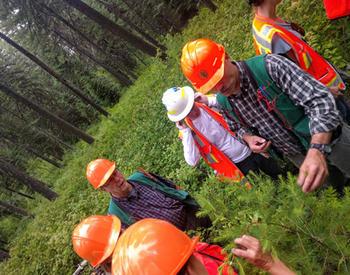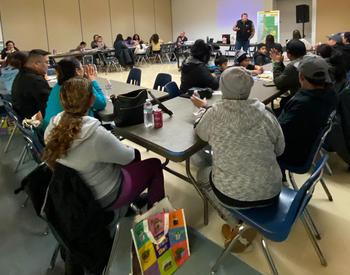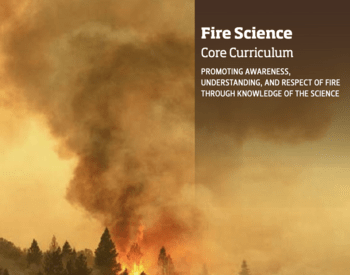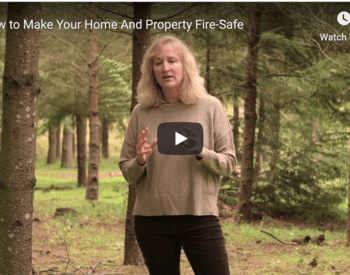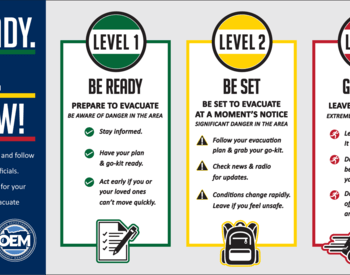CORVALLIS, Ore. – The Oregon State University Extension Fire Program drew more than 400 registrants for its recent webinar, “Not All Flame is the Same,” marking another successful contribution to the overall knowledge of fire’s role throughout Oregon and fire preparedness.
The hour-long webinar, which had been viewed more than 250 times in the three weeks since it published on YouTube, featured diverse stories about how fire has shaped Oregon landscapes historically and currently. The webinar was presented by the program’s team of regional fire specialists who work across the state.
The Fire Program, which was created and funded by the Oregon Legislature, has hosted over 25 webinars since its inception in 2020. The webinars allow the Fire Program team to reach wider audiences in their regions and share valuable and timely information regarding fire and its effects, according to EJ Davis, director of the Fire Program.
In addition to hosting webinars, in the last four years the program has facilitated community preparedness partnerships and landscape planning processes.
Planned prior to 2020
Based on feedback about the need for more wildfire programming, in 2017 the OSU Extension Forestry and Natural Resources Program created a fire science curriculum. The project would later grow into the Fire Program proposal that was funded by the state legislature.
“A lot of people think we got started in 2020 because of the Labor Day fires, but this had been in the making for years,” Davis said.
Carrie Berger, who has been managing the Fire Program since it started, said, “Because Oregon is so diverse, we needed a program with capacity that could reach audiences across the state.”
A team of six dedicated individuals were hired to foster fire-adapted communities and resilient ecosystems throughout Oregon.
“They are intended to be a go-to in their regional areas for all things wildland fire,” Davis said. “They are experts on the past, present and future of wildfire in their areas and help connect people to resources in their communities.”
Berger said, “The fire specialists were placed in six regions to serve the diverse needs across Oregon. You have the rangelands, coast, valley, and Southwest, Central and Northeast Oregon – each geography is so different from the other it would be difficult to facilitate community and landscape needs without the team.”
Davis explained that each fire specialist has unique place-based knowledge about their region and its fire ecology, which is essential throughout the state. “Fire can happen anywhere in Oregon. We have always had fire. Even at the coast, even at high elevation moist forests.”
Partnerships are essential
The 2020 wildfire season was the most destructive in Oregon’s history. Beginning on the Sept. 7-8 Labor Day week windstorm, the fires killed at least 11 people, burned more than 1 million acres and destroyed thousands of homes.
The Fire Program responded in 2021 with the educational program “Fire Aware. Fire Prepared.” The program led an interagency team to produce Wildfire Wednesdays, an 11-episode series of webinars dedicated to wildfire preparedness at three levels: individual, community and landscape.
The webinars, which featured speakers from several local, state and federal agencies, reached people in all 36 counties in Oregon by the end of 2021, and more than 10,000 people either attended the live webinars or watched the recordings.
“The Fire Program is all about partnerships,” Davis said, adding that wildfire is a large and complex issue and no single entity can deal with it alone.
“Just as our landscapes are diverse, our partnerships are diverse,” Berger said.
The Fire Program is housed within Forestry and Natural Resources Extension. That leads to cross-program initiatives. For example, the Oregon Naturalist Program will host fire specialists at events or webinars.
The Fire Program also partners with the Oregon Department of Forestry and the Oregon Department of the State Fire Marshal, and federal agencies like the U.S. Bureau of Land Management and U.S. Forest Service.
On the ground, local partnerships such as watershed councils and “fire-wise” communities are also essential to the program’s success, Davis said.
Recently, the Fire Program and partners was awarded a gold medal from the Association for Communication Excellence for its “Nuestro Futuro en Nuestras Manos/Our Future in Our Hands,” a bilingual booklet that prepares families for wildfire with simple actions and builds resilience to deal with potentially negative consequences. The publication includes information on creating a “go-bag,” protecting your home against fire, smoke and caring for your mental health during wildfire events.
Landscape-scale work
Extension's Fire Program supports planning, implementation, and monitoring of landscape resiliency projects.
One way in which the team works to enhance their existing support for private landowners and public land managers is with outreach, education, and training on prescribed fire, a tool used in land management to restore fire-adapted ecosystems and reduce fuels.
“We offer the full spectrum of [prescribed fire] education and training – from introductory to advanced,” Berger said.
The Prescribed Fire Basics series is a digital publication series offering information to learn more about prescribed fires and the way they effect landscapes in Oregon. The learning module provides introductory-level information on prescribed burns and every step that goes into the planning and implementation of a prescribed fire.
This module is a great place to start for those interested in prescribed fires, as it provides a step-by-step overview of the processes to keep in mind, Berger said.
Ignite Rx Fire Trainings, hosted in 2024 by Chris Adlam, the program’s Southwest regional fire specialist, included hands-on skills training about prescribed fire, as well as voices on fire as an indigenous cultural practice. The goal of these trainings is to connect with landowners about using prescribed fires as a tool.
OSU Extension is also a Certified Burn Manager Program service provider, Davis said, meaning it offers trainings for those who wish to become a certified burn manager in Oregon.
In 2021, the Fire Program developed a three-day training for the Natural Resources Conservation Service (NRCS) about prescribed fire. The programming was essential as it allowed NRCS staff to become approved to recommend prescribed fires for land restoration efforts. In May 2024, Extension offered additional training to NRCS, which brought in staff from across the country.
Meet the team
Here are some details about the Fire Program faculty and staff:
Davis is the director, and an associate professor of practice in the Department of Forest Ecosystems and Society in the College of Forestry. Davis also serves as principal investigator of the Northwest Fire Science Consortium.
Berger has worked in the College of Forestry for 17 years. Within her role as manager, she supports the regional fire specialists and helps to guide overall Program direction towards resilient communities and effective organizations, cultures of adaptation and fire-adapted ecosystems.
Adlam is an assistant professor of practice and regional fire specialist for southwest Oregon since 2020. He focuses on collective action solutions for addressing wildfire impacts, including prescribed burning and Indigenous cultural burning, forest restoration and community-based preparedness.
Kayla Bordelon is an assistant professor of practice and the regional fire specialist for the Willamette Valley and Columbia Gorge since 2022. Her work focuses on developing collaborative capacity for wildfire resilience, equitable community wildfire adaptation and effective education and engagement practices.
Ariel Cowan is an assistant professor of practice and the regional fire specialist for Central Oregon since 2020. She has expertise in prescribed fire, forest health and management, non-timber forest products, plant diseases and community engagement.
Aaron Groth is an assistant professor of practice and the regional fire specialist for the Oregon Coast since 2021. He has expertise in community disaster preparedness, geography and environmental education.
Micah Schmidt, the newest member of the team, is an assistant professor of practice and regional fire specialist for northeast Oregon. Schmidt focuses on prescribed fire, fire history and ecology, forest restoration and management and geospatial mapping and analysis.
Katie Wollstein, is an assistant professor of practice in the Department of Animal and Rangeland Sciences in the College of Agricultural Sciences and rangeland fire specialist in Southeastern Oregon since 2020. Based at the Eastern Oregon Agricultural Research Center in Burns, Wollstein’s work focuses on integrated range and fire management, landscape-scale planning for improved fire outcomes and social and ecological fire resilience in rangeland communities.
Autumn Ellison is the Fire Program outreach coordinator and program coordinator for the Northwest Fire Science Consortium, where she works to accelerate the awareness, understanding and adoption of wildland fire science across audiences.
Manuel Machado is the natural resources workforce program coordinator. Machado is working with community-based organizations across the Pacific Northwest to develop bilingual learner-centric educational materials for Latine forest workers. He develops Extension programming that raises awareness of the labor-intensive forest workforce and builds solidarity across Oregon's forestry workforce to make it safer and more equitable.
Previously titled OSU Extension Fire Program adds faculty, educates people about preventing fire






